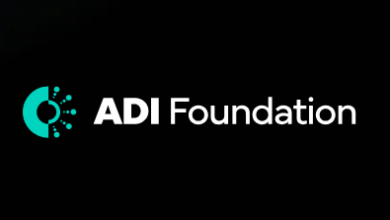Circle MENA Vice President Miriam Kiwan Ignites the Future with Vision for MENA’s Crypto Frontier
In the ever-evolving landscape of cryptocurrencies, one concept has gained significant attention and prominence in recent years: stablecoins. These digital assets offer a unique bridge between the volatile world of cryptocurrencies and the stability of traditional fiat currencies.
Designed to maintain a steady value, stablecoins have become integral tools for investors, businesses, and individuals seeking to harness the advantages of blockchain technology.
In a recent interview conducted by UNLOCK Blockchain, Miriam Kiwan, Vice President MENA of USDC stablecoin issuer Circle, shed light on Circle’s vision for expanding its presence in the MENA region and the steps the company is taking to ensure compliance with evolving regulations in the blockchain and cryptocurrency space.
Circle’s Vision for MENA Expansion
When asked about Circle’s vision for expanding in the MENA region, Miriam emphasized the company’s commitment to increasing global economic prosperity through the frictionless exchange of value. She highlighted the importance of fostering financial inclusion and improving the adoption of USDC, Circle’s regulated stablecoin, across the region.
“Circle’s vision as a financial technology player is to increase global economic prosperity through the frictionless exchange of value,” Kiwan stated. “We are looking to improve the adoption of USDC across the region and enable individuals and businesses to participate in the digital economy while fostering financial inclusion.”
Kiwan pointed out the significance of the UAE, where 89% of residents are expats, making it an essential market for remittances. She believes that USDC is well-positioned to facilitate cross-border business transactions and individual remittances, leveraging the power of blockchain technology.
Ensuring Compliance with Evolving Regulations
As the Middle East experiences growing crypto adoption and an influx of blockchain projects, Miriam detailed the steps Circle is taking to ensure that USDC remains compliant with evolving regulations. She stressed the importance of close engagement with regulators and staying informed about the development of stablecoin frameworks in the region.
“We engage very closely with regulators across the globe, especially in this region, where virtual assets and stablecoin frameworks are being considered and developed,” Miriam explained. “We also ensure that our users have access to USDC and our web3 solutions through partnerships with financial institutions and regulated entities.”
Circle employs a “compliance-first” approach characterized by three key areas. First, they maintain a robust compliance and transparent framework, incorporating KYC (Know Your Customer) and AML (Anti-Money Laundering) procedures to verify user identities and prevent illicit activities. They also provide third-party audited reports to confirm the accuracy of USDC reserves and circulation.
Second, Circle actively collaborates with financial institutions and stakeholders to foster dialogue and contribute to the development of the blockchain ecosystem, both locally in the UAE and across the region.
Finally, Circle places a strong focus on education, conducting initiatives to raise awareness and help users navigate the industry responsibly. These steps aim to strike a balance between ensuring accessibility for users in the region and adhering to regulatory requirements.
The Intersection of Financial Inclusion and Crypto Adoption
In the second part of the interview, Miriam delved into the critical intersection between financial inclusion and crypto adoption in the MENA region. She emphasized the shift from speculation to utility and the profound impact this transition has on the region.
The female industry leader highlighted the staggering statistic that approximately 1.7 billion people worldwide are either underbanked or unbanked, with two-thirds of this population having access to smartphones. She stressed the pivotal role of regulated payment stablecoins like USDC in providing these citizens with a secure and efficient means of transferring and storing value.
“We see stablecoins like USDC as a tool for citizens to transfer value between each other at a greater speed and lower cost, tapping into the important element of financial inclusion,” Miriam explained.
The interview also explored the MENA region’s unique position, with nearly 70% of its adult population remaining unbanked, a statistic that becomes even more staggering when considering the broader geography beyond the UAE.
One particularly noteworthy point was the Chainalysis report, which indicated that the MENA region is the sixth-largest crypto economy in the world, receiving nearly $400 billion in one year. This trend underscores the vital use cases for stablecoins, such as serving as a store of value and a tool for remittances, particularly in countries like Pakistan, Morocco, Egypt, Turkey, and Lebanon.
The interview also highlighted Lebanon as a compelling use case. The country’s struggling local currency, limited access to banks, and restrictions on international remittances have led to a growing generation of freelancers and remote workers who prefer receiving their wages in stablecoins for their speed, cost-effectiveness, and ease of exchange in the local market.
Kiwan emphasized that Circle is actively raising awareness about the use of stablecoins like USDC in the MENA region to meet these pressing needs. By addressing the region’s unique challenges, Circle aims to enhance financial inclusion, economic empowerment, and the ease of financial transactions, which is especially vital in nations like Lebanon, experiencing hyperinflation and currency devaluation.
The Role of CBDCs and Stablecoins in the Financial Landscape
In the third part of the interview, Miriam explored the relationship between Central Bank Digital Currencies (CBDCs) and stablecoins, focusing on their complementary roles and the potential benefits they offer to the financial ecosystem.
Miriam emphasized the distinction between CBDCs and regulated stablecoins like USDC. CBDCs are centralized digital currencies issued by central banks, subject to the governance and control of these institutions, while stablecoins operate within a decentralized framework, often facilitated by private companies.
She clarified that CBDCs are more likely to facilitate payments for banks and governments, serving a specific purpose in the financial landscape. In contrast, stablecoins like USDC complement these CBDCs by playing a more extensive role throughout the economy, thanks to their flexibility and accessibility.
Moreover, Miriam stressed the importance of regulatory clarity and how it would shape the future of stablecoins. In a regulated environment, stablecoins have the potential to influence the traditional financial landscape significantly, enhancing efficiency and liquidity, improving interoperability across borders, and empowering businesses to transform their models for the future.
She also pointed out that commercial banks are increasingly venturing into the digital asset space, with some obtaining custodian licenses for digital assets. Miriam acknowledged the role of banks in integrating digital assets into their platforms, which could be an exciting development. Collaboration between institutions like Circle and these banks is expected to ensure a seamless integration of digital assets into the traditional financial system.
One noteworthy example was the collaboration between Circle and Visa, who partnered with Solana to enable settlements using USDC. This partnership demonstrated how stablecoins could play a meaningful role within the traditional financial space, empowering businesses to transition to web3 and transform their business models for the future.
The Future of Regulation and Crypto Adoption in the Region
In the final part of the interview, Miriam shared her insights on the regulatory environment in the region and the future of the crypto space, highlighting key factors that will shape the industry’s potential. She commended the UAE for its leadership in the digital asset and web3 space, attributing its success to forward-thinking regulators and the proactive stance of government bodies, including those in Abu Dhabi, Dubai, and Bahrain. This, she noted, serves as an exemplary model not only for the UAE, but also for the wider region and world.
She expressed her optimism about the future of regulations, expecting to see comprehensive frameworks emerge across the region. Miriam also highlighted the importance of adopting these regulations at various business hubs. Circle, as a player in this space, welcomes and supports these developments, actively working with different regulators and stakeholders.
Miriam identified regulation as a key element, as it is essential to onboard key stakeholders, including the banking system and large institutions. She stressed that regulatory clarity is a crucial piece of the puzzle, and it will pave the way for more institutional adoption.
The interviewee referred to data from Chainalysis, revealing that approximately 67% of crypto transactions are from institutions, indicating the readiness of this segment to enter the space. She anticipates that regulation and institutional involvement will unlock the sector’s potential by facilitating collaboration among various ecosystem stakeholders.
The interview concluded with a powerful term that perfectly encapsulates the current sentiment in the crypto space: “unlock.” This term reflects the profound anticipation and excitement for the future of crypto as it traverses the intricate regulatory landscape, encourages collaboration among industry stakeholders, and steadfastly advances, progressively unlocking its full potential.
Miriam believes that the journey ahead is filled with promise, and as the crypto industry forges ahead, it seems poised to unlock innovative possibilities and redefine the future of finance.





